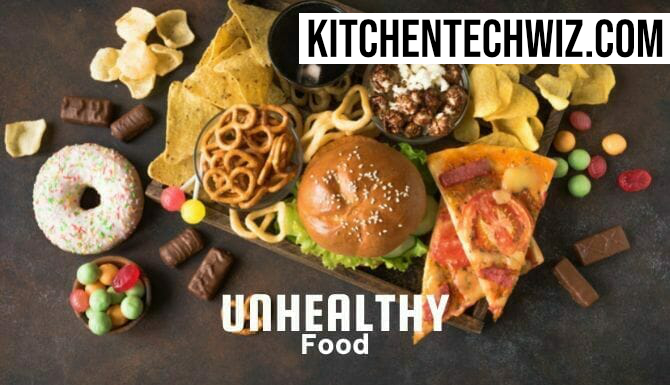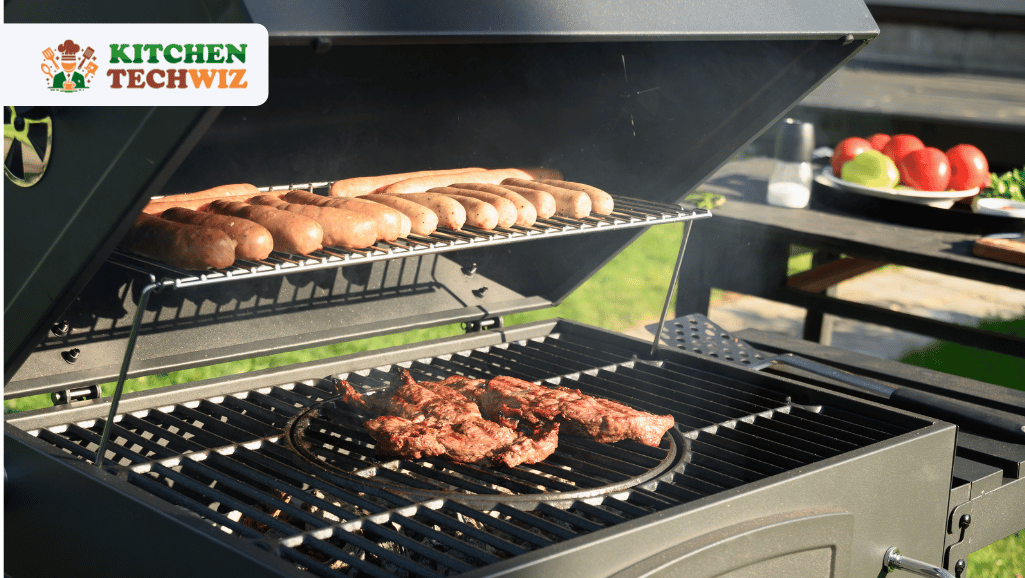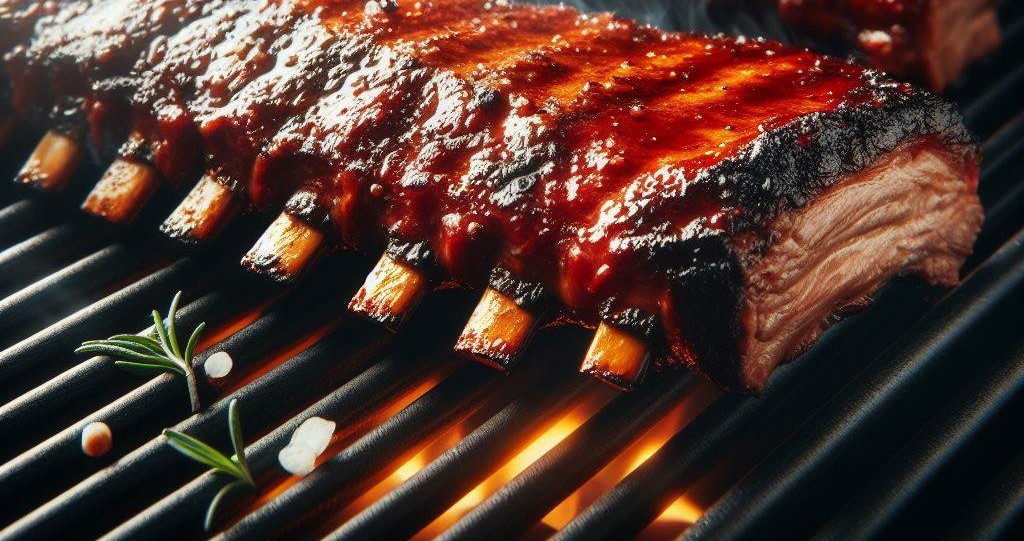There are many unhealthy cooking methods, but deep frying is the unhealthiest. When food is deeply fried, it is cooked in hot oil. It causes the food to absorb a lot of fat and calories, which can lead to weight gain and other health problems.
The high temperatures used to fry foods can cause the formation of harmful compounds, including acrylamide and advanced glycation end products (AGEs). Acrylamide is a carcinogenic compound that forms when starchy foods are cooked at high temperatures. AGEs are another harmful compound linked to an increased risk of chronic diseases, such as diabetes and heart disease.
Deep-fried foods are also often high in salt, raising blood pressure and increasing the risk of heart disease. And because the oil used for deep frying is usually reused repeatedly, it can contain harmful chemicals that can be bad for your health.
So, if you’re looking to eat healthily, it’s best to avoid deep-fried foods. There are plenty of other healthier cooking methods, such as baking, grilling, charcoal grilling or even steaming.
1. Frying:
Frying, while undeniably delicious, has earned a reputation as one of the unhealthiest cooking methods. When food is fried, it is submerged in hot oil, causing it to absorb a significant amount of extra fat and calories. This not only contributes to weight gain but also increases the risk of heart disease and other health issues. Moreover, the high temperatures involved in frying can lead to the formation of harmful compounds such as acrylamide, which is linked to cancer.
However, it’s important to note that not all fried foods are equally unhealthy. Factors like the type of oil used and how often it’s reused can greatly impact the healthiness of fried foods. Additionally, controlling the temperature during frying can minimize the absorption of excess oil by food. While frying may never be considered a health-conscious choice, being mindful about these factors can help mitigate some of its negative effects.
High oil content, potential carcinogens
High oil content in cooking poses a significant health risk due to the production of potential carcinogens. When cooking at high temperatures, especially with oils that have a low smoke point, chemical reactions occur that can generate carcinogenic compounds such as polycyclic aromatic hydrocarbons (PAHs) and acrylamide. These compounds have been linked to an increased risk of cancer and other serious health issues.
Furthermore, the type of oil used can also affect the formation of harmful compounds during cooking. Oils high in polyunsaturated fats, such as corn or sunflower oil, are more susceptible to oxidation and the creation of free radicals when exposed to heat. This oxidative stress is known to contribute to chronic inflammation and cellular damage, further increasing the potential health risks associated with high oil content in cooking.
2. Deep frying:
Deep frying may be one of the most enticing cooking methods due to its ability to create crispy and tantalizing textures. However, this method poses significant health risks, as it involves submerging food in hot oil, leading to a significant increase in calorie and fat content. Additionally, deep-fried foods have been linked to a higher risk of heart disease, obesity, and Type 2 diabetes due to the formation of harmful compounds during the frying process. Despite its undeniable appeal, deep frying should be approached with caution and moderation to minimize its adverse effects on our health.
While the allure of indulging in deep-fried delicacies is undeniable, the long-term consequences cannot be ignored. The high temperatures used in deep frying can cause oils to break down and form harmful free radicals, which are known to contribute to cellular damage and aging. Furthermore, excessive consumption of deep-fried foods has been associated with an increased risk of certain cancers. While occasional enjoyment is understandable, it’s essential for individuals to balance their diet by incorporating healthier cooking techniques for overall well-being.
Excessive oil absorption, trans fats formation
Excessive oil absorption during the cooking process can lead to the formation of trans fats, which have been linked to a variety of health issues. When food is submerged in hot oil for prolonged periods, it absorbs an excessive amount of fat, leading to increased calorie content and potential health risks. This process is particularly common with deep-frying, where foods like fries and chicken are completely immersed in oil.
Trans fats form when unsaturated fats undergo hydrogenation, creating a more stable structure that extends shelf life but poses serious health risks. Consumption of trans fats has been associated with an elevated risk of heart disease, obesity, and other chronic conditions. It’s important for individuals to be mindful of how their foods are being cooked and opt for healthier methods that minimize oil absorption and reduce the formation of harmful trans fats. Alternatives such as baking, grilling, or steaming can help in achieving this goal while maintaining flavor and texture.
3. Grilling/BBQ:
Picture this: It’s a lazy summer afternoon, the sun is shining, and the aroma of sizzling meat fills the air. Grilling BBQ has long been synonymous with good times and delicious food. However, it’s worth considering the health implications of this popular cooking method. The high heat used in grilling can lead to the formation of harmful compounds such as heterocyclic amines (HCAs) and polycyclic aromatic hydrocarbons (PAHs), which have been linked to an increased risk of cancer.
While there’s no denying the mouthwatering appeal of barbecued food, it’s important to approach grilling with caution. One way to reduce the formation of these harmful compounds is to marinate your meat before grilling. This not only adds flavor but also creates a protective barrier that can lower HCA production. Additionally, using leaner cuts of meat and avoiding prolonged exposure to high heat can help mitigate some of the health risks associated with grilling BBQ. Ultimately, enjoying barbecue in moderation and taking steps to minimize potential risks can help ensure that you savor those backyard gatherings for years to come.
Charred meat, heterocyclic amines, polycyclic aromatic hydrocarbons
Charred meat, often celebrated for its smoky flavor and appealing appearance, is a result of high-temperature cooking methods such as grilling, broiling, or pan-frying. However, this seemingly innocent culinary delight comes with a health warning. When animal proteins are cooked at high temperatures, heterocyclic amines (HCAs) and polycyclic aromatic hydrocarbons (PAHs) are formed. These compounds have been linked to an increased risk of cancer and other health issues when consumed in large quantities.
HCAs are formed when amino acids and creatine in meat react at high temperatures. Studies have shown that consuming substantial amounts of HCAs can contribute to an elevated risk of certain cancers. Additionally, the inhalation of PAHs from smoke during the grilling process has been associated with respiratory issues and potential carcinogenic effects. While moderation is key in enjoying charred meats without excessive health concerns, exploring alternative cooking methods or pre-cooking strategies to minimize HCA formation may be essential for long-term well-being.
4. Microwave cooking:
Microwave cooking has become a popular go-to method for those seeking quick and convenient meals. However, recent research suggests that this method may not be the healthiest choice. While microwaves can preserve nutrients better than other cooking methods due to their short cooking times, they also have the potential to cause nutrient loss through heating and radiation exposure. In addition, using plastic containers in the microwave can lead to chemicals leaching into your food, posing potential health risks.
Furthermore, microwave cooking often promotes unhealthy eating habits by encouraging the consumption of processed and pre-packaged foods. The convenience factor of quickly preparing frozen meals or snacks can lead to a diet high in sodium, preservatives, and unhealthy fats. As we strive for more natural and wholesome diets, it’s essential to re-evaluate our reliance on microwave cooking and consider alternative methods that prioritize nutrition and overall well-being.
Nutrient loss, potential chemical leaching from containers
Nutrient loss and potential chemical leaching from containers are two critical factors to consider when evaluating the healthiness of cooking methods. When food is cooked using high heat for extended periods, essential nutrients such as vitamins and minerals can be lost. This nutrient loss occurs through various mechanisms, including water-soluble vitamin depletion during boiling and antioxidant degradation during frying. Additionally, the use of certain types of containers for cooking or storing food can result in potential chemical leaching. For example, plastic containers may release harmful chemicals like BPA or phthalates into stored food, especially when exposed to heat or acidic ingredients.
Furthermore, the impact of nutrient loss and chemical leaching extends beyond just the immediate health concerns. It also raises questions about the long-term effects on overall well-being and chronic disease risk. As we continue to explore these factors, it becomes clear that selecting cooking methods that minimize nutrient loss and prioritize safe containers is crucial for maintaining a healthy diet.
In conclusion, understanding the implications of nutrient loss and chemical leaching from containers provides valuable insights into choosing healthier cooking methods. Consideration should go beyond taste preferences to encompass broader health impacts when making culinary choices. By recognizing these factors’ significance, individuals can make informed decisions that support not only their immediate well-being but also their long-term health outcomes.
5. Boiling:
Boiling is a seemingly healthy cooking method, as it doesn’t require the use of added fats like oil or butter. However, what many people don’t realize is that boiling can lead to nutrient loss in food. Water-soluble vitamins such as vitamin C and B vitamins can leach out into the water, especially if overcooked. Additionally, boiling can also cause the breakdown of certain heat-sensitive compounds in vegetables, reducing their overall nutritional value.
One way to mitigate nutrient loss during boiling is to use minimal amounts of water and cook vegetables for shorter periods. This helps preserve more of the nutrients while still achieving a desired level of tenderness. Furthermore, reusing the flavorful leftover liquid from boiled vegetables in soups or stews can help to recapture some lost nutrients and enhance the overall taste of dishes. So while boiling may seem like a simple and healthy cooking method on the surface, its impact on nutrient retention should not be overlooked.
Loss of water-soluble nutrients
The loss of water-soluble nutrients during the cooking process is a significant concern for those looking to maximize the nutritional value of their food. Water-soluble vitamins such as vitamin C and B vitamins are particularly vulnerable to degradation when exposed to heat, water, and air. These essential nutrients play a crucial role in various bodily functions, including energy metabolism, immune system support, and collagen production. Unfortunately, traditional cooking methods like boiling can lead to substantial nutrient losses as vitamins leach into the cooking water and degrade from prolonged exposure to heat.
The impact of nutrient loss on our overall health cannot be overstated. Studies have shown that excessive cooking can result in a significant reduction in the vitamin content of foods, leading to potential deficiencies if not compensated for through dietary adjustments or supplementation. Furthermore, the popularity of convenience foods and fast-paced lifestyles has led many individuals to rely on heavily processed and pre-cooked meals, which often undergo extensive heating processes that further deplete their nutrient content. As we continue to explore the influence of different cooking methods on food’s nutritional profile, it becomes increasingly important for individuals to consider alternative approaches that preserve essential water-soluble nutrients while still delivering flavorful and satisfying meals.
Conclusion
It’s evident that the unhealthiest cooking method is deep frying. The high temperatures and prolonged exposure to oil can lead to the formation of harmful compounds such as acrylamide and trans fats, which have been linked to various health issues. While deep fried foods may be tempting due to their crispy texture and rich flavor, it’s important to consider the long-term impact on our health.



![16 Best Tabletop Propane Gas Grills 2024: [Also Charcoal & Electric]](https://kitchentechwiz.com/wp-content/uploads/2021/04/Best-Tabletop-Propane-Grill-1.jpg)

Leave a Reply